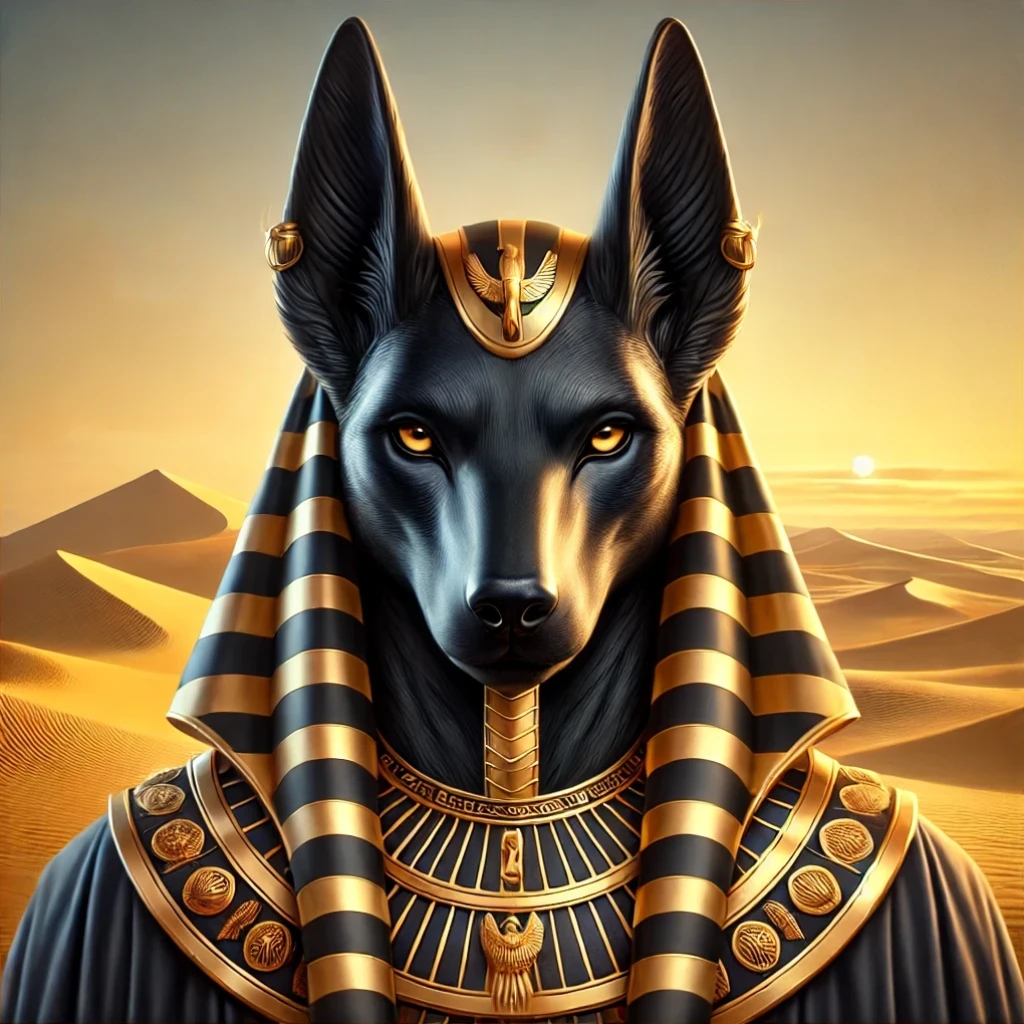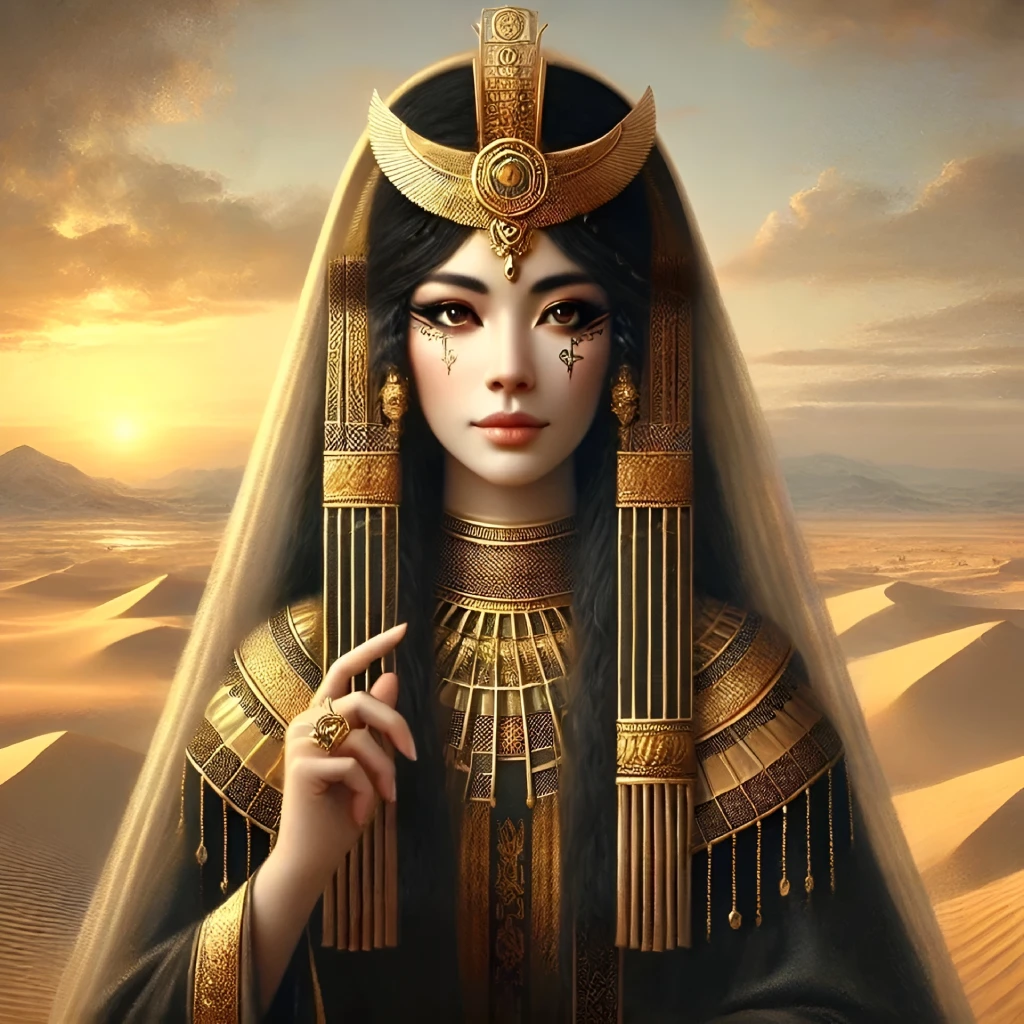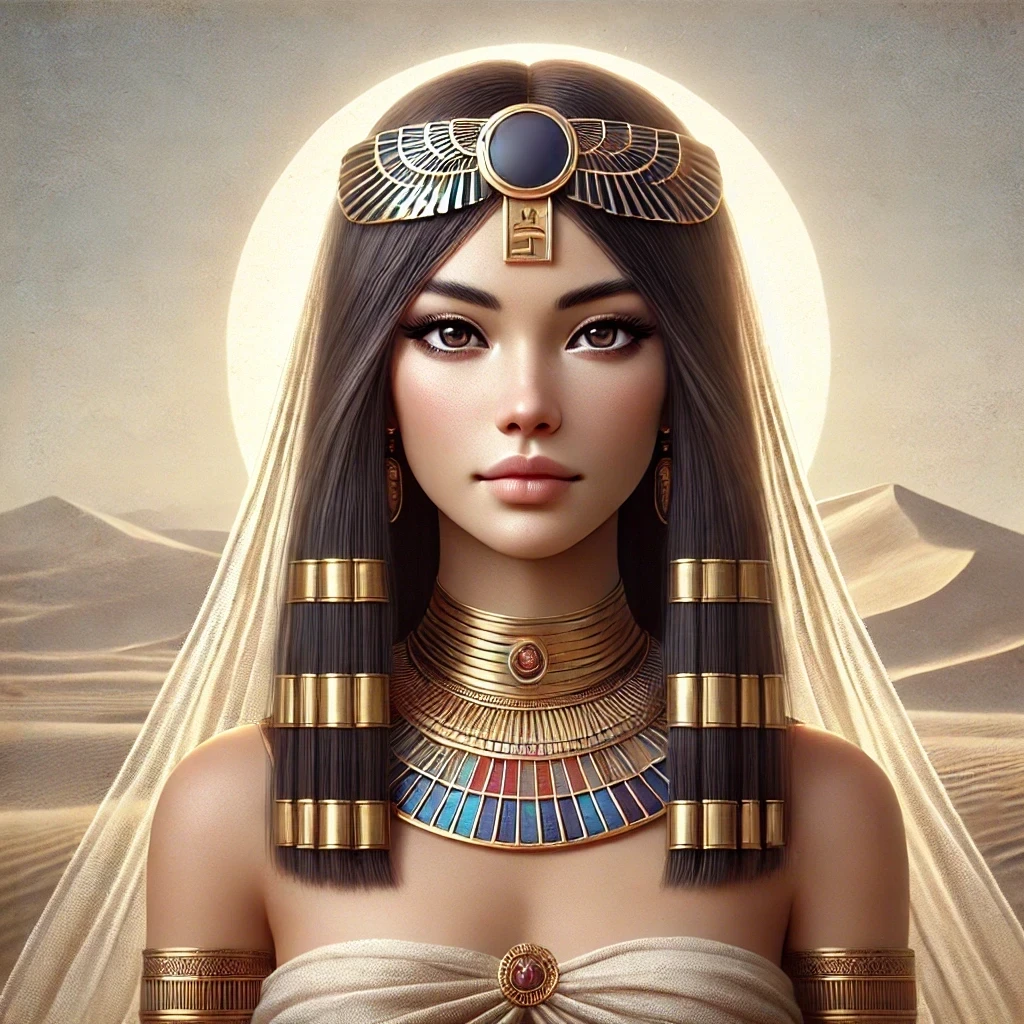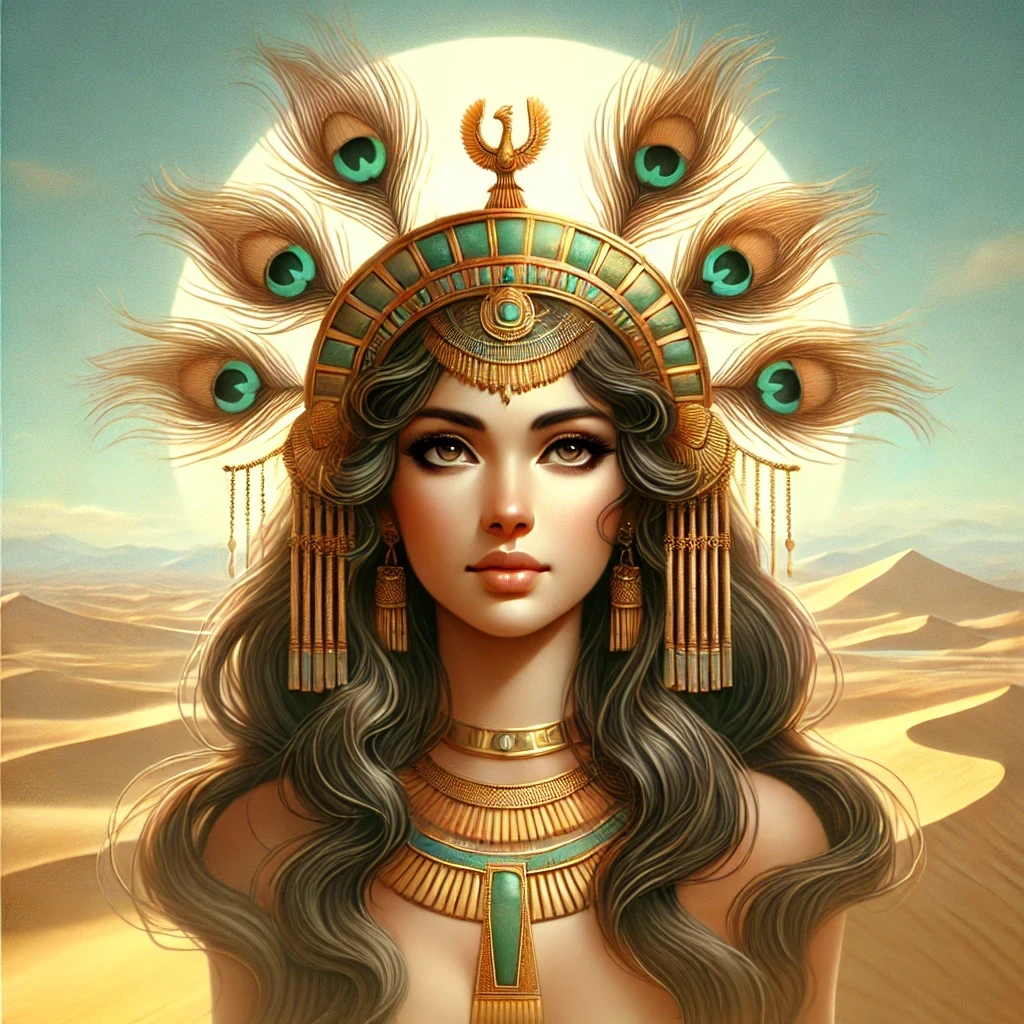Anubis, one of the most iconic deities of ancient Egypt, is a figure shrouded in mystery and reverence. Known primarily as the god of the dead, mummification, and the afterlife, this enigmatic figure played a crucial role in the spiritual and daily lives of the ancient Egyptians. His name, derived from the Egyptian “Inpw” or “Anpu,” translates to “royal child” or “to decay,” reflecting his dual association with both the protection of the deceased and the natural process of decomposition. Often referred to by epithets such as “He Who is Upon His Mountain,” “Lord of the Sacred Land,” and “Foremost of the Westerners,” Anubis was a guardian of tombs and a guide for souls navigating the perilous journey to the afterlife. His enduring legacy is a testament to the profound impact he had on Egyptian religion and culture.

Origins
Early Depictions and Development
The origins of Anubis can be traced back to the Predynastic Period of Egypt (c. 6000–3150 BCE), making him one of the oldest deities in the Egyptian pantheon. Early depictions of the god often show him as a full jackal or a wild dog, animals commonly associated with cemeteries due to their scavenging behavior around burial sites. This connection likely arose from the Egyptians’ desire to appease these creatures, transforming them into a protective deity who would guard the dead rather than disturb them.
By the Old Kingdom (c. 2686–2181 BCE), Anubis had become a central figure in funerary practices. He was initially considered the primary god of the dead before being gradually overshadowed by Osiris, another prominent deity associated with the afterlife. Despite this shift, the jackal-headed god retained his vital role in mummification and the judgment of souls.
Regional Variations and Syncretism
Anubis’s worship was widespread, but his significance varied across different regions of Egypt. In the city of Cynopolis (modern-day El-Kais), he was venerated as the chief god, and the local population held jackals in high regard. Over time, his role became intertwined with other deities, such as Wepwawet, another jackal-headed god associated with warfare and opening the paths for the deceased. This syncretism highlights the fluid nature of Egyptian religion, where gods often merged or shared attributes to reflect evolving theological ideas.
Appearance
Iconography and Symbolism
Anubis is most commonly depicted as a man with the head of a jackal, a representation that underscores his connection to death and the afterlife. The choice of a jackal is significant; these animals were often seen prowling around graves, and their keen senses made them natural symbols of vigilance and protection. The black coloration of his jackal head, often emphasized in art, symbolizes rebirth and the fertile soil of the Nile, which was crucial for agriculture and life.
Artistic Representations
In tomb paintings, statues, and funerary texts, Anubis is frequently shown performing his duties. He is often portrayed standing over a mummy, symbolizing his role in the embalming process, or holding the ankh, the symbol of life, and the was scepter, representing power and dominion. His presence in these scenes reassured the deceased and their families that the journey to the afterlife would be safeguarded.

Abilities
Guardian of the Dead
Anubis’s primary role was to protect the deceased and ensure their safe passage to the afterlife. He was believed to oversee the embalming process, a sacred ritual that preserved the body for eternity. His involvement in mummification was not merely symbolic; priests performing the rites often wore jackal masks to invoke his presence and blessings.
Psychopomp and Guide
As a psychopomp, Anubis guided souls through the Duat, the Egyptian underworld. This journey was fraught with dangers, including malevolent spirits and treacherous terrain. The god’s intimate knowledge of the Duat made him an indispensable ally for the deceased, ensuring they reached the Hall of Ma’at for the final judgment.
Judge of Souls
In the Weighing of the Heart ceremony, Anubis played a critical role in determining the fate of the deceased. He would weigh the heart of the departed against the feather of Ma’at, the goddess of truth and justice. If the heart was found to be pure and free of sin, the soul would be granted eternal life. If not, it would be devoured by Ammit, a fearsome creature, resulting in eternal oblivion.
Domain
The Necropolis and Sacred Land
Anubis’s domain extended over the necropolises, the cities of the dead, and the sacred land where the deceased were laid to rest. He was often referred to as the “Lord of the Sacred Land,” emphasizing his authority over these hallowed grounds. His presence was believed to deter grave robbers and malevolent spirits, ensuring the sanctity of the tombs.
The Duat
The Duat, or Egyptian underworld, was another realm under Anubis’s jurisdiction. This complex and mysterious dimension was both a physical and spiritual space where the deceased underwent trials and transformations. The god’s mastery of this realm made him an essential figure in the afterlife narrative.

Myths
The Osiris Myth
One of the most significant myths involving Anubis is the story of Osiris. According to legend, Osiris was murdered by his brother Set, who dismembered his body and scattered the pieces across Egypt. Isis, Osiris’s wife, enlisted Anubis’s help to reassemble and embalm the body, marking the first act of mummification. This myth not only established Anubis’s role in funerary practices but also reinforced his association with resurrection and eternal life.
The Weighing of the Heart
Another prominent tale is the Weighing of the Heart ceremony, detailed in the Book of the Dead. In this ritual, Anubis oversees the judgment of the deceased, ensuring that the scales are balanced and justice is served. This myth highlights the god’s role as a fair and impartial arbiter, a crucial aspect of his character.
Symbolism
The Jackal
The jackal is the most enduring symbol associated with Anubis. Its presence in Egyptian art and religion reflects the animal’s natural behavior and the Egyptians’ desire to transform a potential threat into a protective force. The jackal’s keen senses and nocturnal habits also made it a fitting emblem for a deity overseeing the mysteries of death and the afterlife.
The Ankh and Was Scepter
The ankh, symbolizing life, and the was scepter, representing power, are frequently depicted in Anubis’s hands. These objects underscore his dual role as a guardian of the dead and a bestower of eternal life. They also highlight the interconnectedness of life and death in Egyptian cosmology.
Worship
Temples and Priests
Although Anubis did not have as many temples dedicated to him as other gods, his presence was felt in every necropolis. Priests of Anubis, often referred to as “stolists,” were responsible for performing the embalming rituals and maintaining the sanctity of the tombs. These priests wore jackal masks during ceremonies to embody the god’s essence.
Rituals and Festivals
Anubis was honored during various funerary rituals and festivals. The most significant of these was the “Feast of Anubis,” a celebration that involved offerings, prayers, and processions. These rituals were designed to ensure the god’s favor and protection for both the living and the dead.
Associations
Connections to Other Deities
Anubis’s role often brought him into contact with other gods. He was closely associated with Osiris, serving as his loyal companion and protector. He also had ties to Isis, who relied on his expertise in the Osiris myth. Additionally, Anubis was sometimes linked to Horus, the falcon-headed god of the sky, reflecting the interconnected nature of Egyptian deities.
Famous Individuals
Several pharaohs and nobles sought Anubis’s protection for their journey to the afterlife. Tutankhamun’s tomb, for instance, contains numerous depictions of the god, highlighting his importance in royal funerary practices.
Legacy
Decline and Transformation
With the rise of Christianity and the decline of ancient Egyptian religion, Anubis’s role diminished. However, his legacy endured in various forms. The early Christians of Egypt often associated him with their own beliefs about death and the afterlife, blending ancient traditions with new religious ideas.
Modern Influence
Today, Anubis remains a powerful symbol in popular culture, appearing in literature, film, and art. His image continues to captivate audiences, serving as a reminder of humanity’s enduring fascination with death, the afterlife, and the mysteries that lie beyond.
In conclusion, Anubis stands as a testament to the complexity and richness of ancient Egyptian religion. His enduring legacy is a reflection of the profound impact he had on the spiritual and cultural landscape of one of history’s most fascinating civilizations.
Trivia
Canine Confusion: While often associated with jackals, some scholars suggest the animal represented might have been an African wolf or even a hybrid. The precise species remains debated.
Perfumed Protection: In embalming rituals, priests often used a variety of fragrant resins and oils. It’s believed that Anubis’s presence was invoked during the preparation of these substances, adding a sacred dimension to the process.
Divine Perfumer: Due to his association with embalming, Anubis was sometimes considered the patron deity of perfumers and those who worked with fragrant substances.
Beyond the Black: While black is his most iconic color, some depictions of Anubis feature other hues, particularly when representing specific aspects of his role or when incorporated into complex symbolic systems.
Guardian of Secrets: Anubis, as the keeper of the dead, was also seen as a guardian of secrets and hidden knowledge. This association stemmed from the belief that the deceased possessed wisdom and insights into the mysteries of life and death.
A Guide for the Living: While primarily associated with the dead, Anubis was also invoked for protection and guidance in life. Some believed he could help navigate difficult transitions and overcome obstacles.
Beyond Egypt: The worship of Anubis extended beyond the borders of Egypt. During the Roman period, his cult spread to other parts of the Roman Empire, where he was sometimes syncretized with other deities.
Starry Connection: Some interpretations link Anubis to specific constellations, further emphasizing his connection to the cosmos and the mysteries of the afterlife.
Modern Adaptations: Anubis’s image appears in unexpected places in modern popular culture, from video game characters to the logos of various organizations. His enduring appeal transcends cultural boundaries.
Symbol of Transformation: Anubis, overseeing the transition from life to death, can be interpreted as a symbol of transformation and rebirth. His presence reminds us of the cyclical nature of existence and the potential for renewal.



